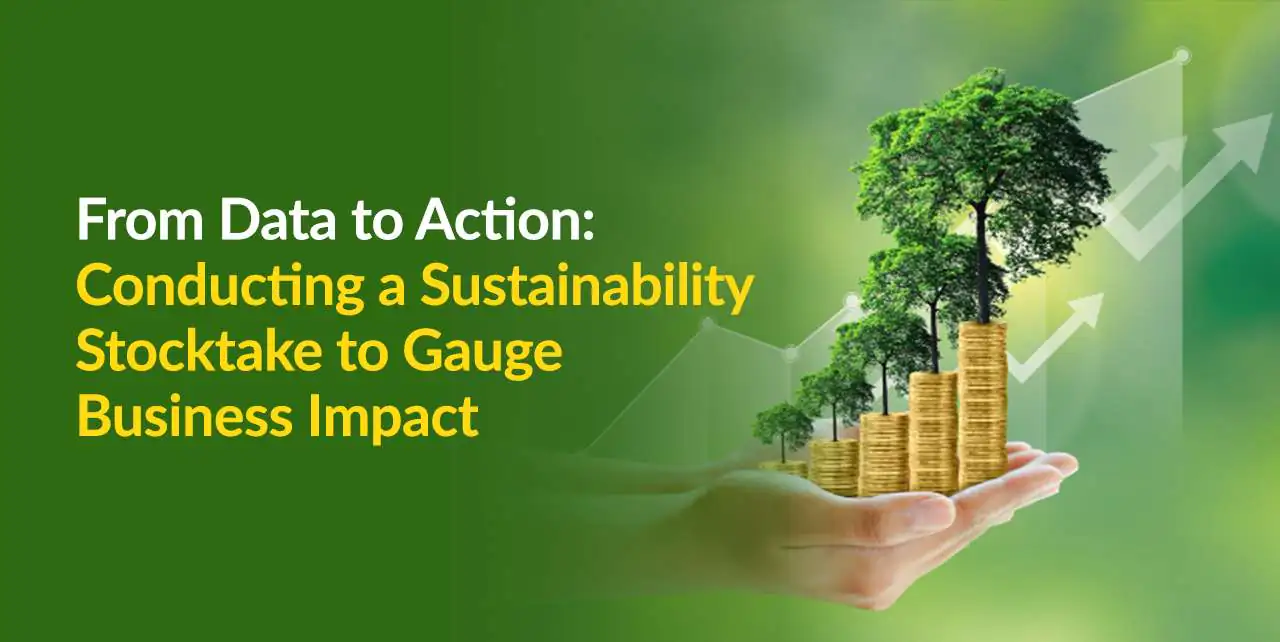From Data to Action: Conducting a Sustainability Stocktake to Gauge Business Impact
Businesses are increasingly recognizing the need to conduct a sustainability stocktake to assess and improve their impact on the planet. This comprehensive guide outlines the step-by-step process for businesses to evaluate their operations, resources, and practices in alignment with sustainability goals.
Define Sustainability Goals
Before delving into the stocktake process, it’s essential to define clear sustainability goals for your business or organisation. Whether it’s reducing carbon emissions, minimizing waste, or promoting ethical sourcing, establishing objectives will guide the entire assessment.
Identify Key Performance Indicators (KPIs)
Determine the Key Performance Indicators (KPIs) that align with your sustainability goals. Common indicators include energy consumption, water usage, waste generation, and carbon emissions. Setting benchmarks based on historical data or industry standards will help gauge progress.
Gather Data
Collecting relevant data across all business operations is crucial for an accurate stocktake. This may involve energy bills, waste disposal records, procurement information, and transportation logs. Collaboration between different departments ensures comprehensive data collection.
Assess Energy Consumption
Analyze energy usage by assessing electricity and fuel consumption. Identify areas for improvement, such as upgrading equipment, implementing energy-saving practices, or exploring renewable energy sources.
Evaluate Water Usage
Examine water consumption patterns within the business and implement water conservation measures. Fixing leaks, using water-efficient technologies, and adopting sustainable water practices contribute to a more eco-friendly approach.
Analyze Waste Generation
Assess the types and quantities of waste generated. Implement waste reduction strategies, explore recycling options, and encourage the use of eco-friendly packaging throughout the entire product lifecycle.
Examine Supply Chain Practices
Evaluate the supply chain for sustainability risks and opportunities. Consider the environmental impact of raw material extraction, transportation methods, and supplier practices. Collaborate with suppliers who share a commitment to sustainability.
Assess Transportation and Logistics
Analyze the environmental impact of transportation and logistics operations. Optimize routes, use fuel-efficient vehicles, and integrate sustainable transportation practices to reduce the carbon footprint.
Review Procurement Practices
Evaluate procurement processes to ensure sourcing sustainable and ethical products and materials. Consider factors such as fair labor practices, environmentally friendly sourcing, and product life cycle assessments.
Employee Engagement
Involve employees in sustainability initiatives. Foster a culture of sustainability, provide training, and encourage employees to contribute ideas for improvement.
Monitoring and Reporting
Establish a system for ongoing monitoring and reporting of sustainability metrics. Regularly review and update data to track progress and identify areas for continuous improvement.
Communicate Results
Share sustainability achievements with stakeholders, including customers, employees, and investors. Transparency and communication demonstrate a commitment to sustainability and can inspire others to follow suit.
Conducting a sustainability stocktake is a proactive step towards aligning business practices with environmental responsibility. By following this comprehensive guide, businesses can identify areas for improvement, set realistic goals, and contribute to a more sustainable future. Through collective efforts, businesses play a crucial role in building a greener, more eco-conscious world.


